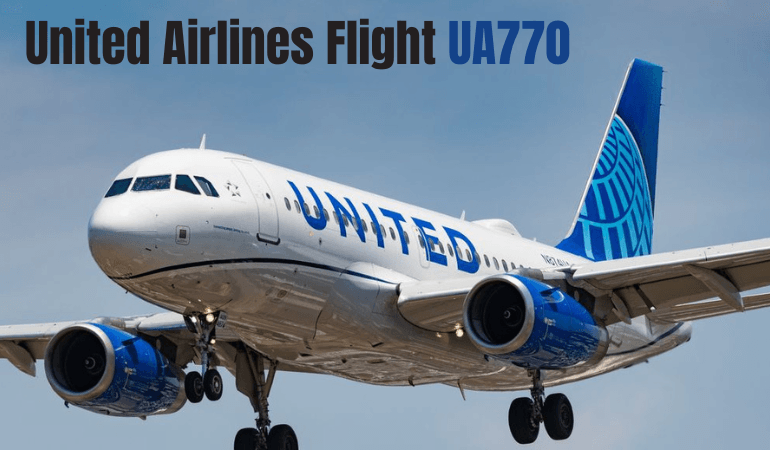When passengers boarded United Airlines Flight UA770, they expected a routine journey. However, what unfolded mid-air was anything but ordinary. The flight had to be diverted unexpectedly, leading to widespread curiosity about what went wrong. This article delves deep into the UA770 emergency diversion, exploring what caused it, how the crew handled it, and what it means for air travel safety.
Overview of Flight UA770
What Is United Airlines Flight UA770?
United Airlines Flight UA770 is a regularly scheduled passenger flight that operates within the United States, typically serving routes between major hubs. Like most United flights, it’s known for reliability and efficiency—making the recent diversion a notable event.
The Route and Aircraft Details
UA770 was reportedly operated by a Boeing 737-900, a workhorse of United’s fleet. The flight was scheduled from Los Angeles International Airport (LAX) to Chicago O’Hare International Airport (ORD)—a route that spans about 1,750 miles.
Timeline of the Incident
The Scheduled Departure
UA770 took off from LAX as planned, climbing smoothly to cruising altitude. Passengers settled in, expecting an uneventful flight.
In-Flight Anomalies
Roughly halfway through the journey, the crew detected an irregular reading—possibly related to cabin pressure or engine performance. Although not immediately critical, safety procedures required immediate evaluation.
Decision to Divert
Following standard aviation safety protocols, the pilots made the decision to divert the flight to the nearest suitable airport rather than risk continuing to Chicago.
Where Did Flight UA770 Divert To?
Emergency Landing Location
UA770 was diverted to Denver International Airport (DEN), a common alternative stop for midwestern-bound flights from the West Coast.
Airport Response and Coordination
Upon approach, emergency vehicles lined the runway, ready for a precautionary response. Thankfully, the aircraft landed safely, and there were no reported injuries.
Reasons Behind the Diversion
Technical Malfunction
Initial reports suggest that the diversion was likely due to a mechanical or technical issue, such as engine vibration or cabin pressurization problems. These scenarios require immediate landing for safety verification.
Medical Emergency
While technical issues are common causes, some passenger accounts hinted at a medical emergency onboard—another valid reason for urgent diversion.
Weather-Related Concerns
Although less likely in this case, sudden turbulence or severe weather en route can also prompt diversions as a preventive measure.
Passenger Reactions and Experience
In-Flight Announcements
Passengers reported that the pilot calmly announced the diversion, assuring everyone of their safety and explaining that it was a precautionary measure.
Passenger Testimonials
One traveler described the experience as “handled with complete professionalism,” while another mentioned minor anxiety but praised the crew’s composure.
Crew Response and Professionalism
How the Pilots Managed the Situation
The pilots followed FAA-approved emergency procedures, maintaining communication with Air Traffic Control (ATC) and prioritizing passenger safety above all else.
Cabin Crew Communication
Flight attendants maintained calm throughout the ordeal, reassuring passengers and preparing for a possible emergency landing—though it ultimately proceeded smoothly.
Emergency Landing Procedures
Safety Protocols
Before landing, the cabin crew secured all loose items, instructed passengers to fasten seatbelts, and prepared for a standard emergency descent.
Air Traffic Control Role
ATC cleared a landing corridor for UA770, ensuring minimal air traffic interference and immediate access to ground support.
United Airlines’ Official Statement
Initial Comments
United Airlines released a brief statement confirming the diversion, citing “an onboard issue that required immediate attention” but assuring that passenger safety was never compromised.
Follow-Up Clarifications
Later, United clarified that the diversion was out of an abundance of caution, and the aircraft was inspected thoroughly before returning to service.
FAA and NTSB Involvement
Investigation Details
The Federal Aviation Administration (FAA) routinely investigates diversions to confirm compliance with safety regulations. The National Transportation Safety Board (NTSB) typically gets involved only if there’s damage or injury—which, in this case, there wasn’t.
Future Safety Recommendations
Such investigations help refine airline safety policies, ensuring continuous improvement in both equipment and crew readiness.
Impact on Connecting Flights and Scheduling
Passenger Rebooking
After the diversion, affected passengers were rebooked on later flights or provided overnight accommodations where necessary.
Flight Operations Disruptions
Though minor delays occurred, United Airlines efficiently managed rescheduling and minimized overall disruption to its flight network.
Media Coverage and Public Reaction
How News Outlets Reported It
Major news outlets reported the diversion with balanced coverage, highlighting United’s swift and professional handling of the situation.
Social Media Buzz
On platforms like X (formerly Twitter) and Reddit, passengers shared real-time updates and praised the crew’s calm demeanor during the unexpected event.
Lessons Learned from UA770
Safety Preparedness
The incident reinforces the importance of routine maintenance checks and crew training, which clearly paid off in this case.
The Importance of Communication
Timely, clear communication—from cockpit to cabin—helped prevent panic and maintained trust throughout the diversion.
United Airlines’ Safety Record
Past Incidents and Improvements
While United has faced isolated mechanical issues in the past, its overall safety record remains strong due to consistent compliance with international aviation standards.
Current Safety Rankings
United continues to rank among the top U.S. carriers for operational safety, according to independent aviation monitoring agencies.
Conclusion
The United Airlines Flight UA770 emergency diversion serves as a reminder that in aviation, safety always comes first. Though the event caused temporary inconvenience, the professionalism of the crew and the airline’s transparent response turned a potential crisis into a textbook example of effective crisis management.
FAQs
1. What caused United Airlines Flight UA770 to divert?
The diversion was due to a technical issue detected mid-flight, leading the crew to land as a precaution.
2. Were there any injuries reported?
No, all passengers and crew members landed safely without incident.
3. Where did the flight land?
UA770 was diverted to Denver International Airport for inspection.
4. How did United handle passenger rebooking?
Passengers were rebooked on alternate flights or provided with hotel accommodations if necessary.
5. Will UA770 continue service after this incident?
Yes, after thorough inspection and clearance from United’s maintenance team, the aircraft resumed regular operation
